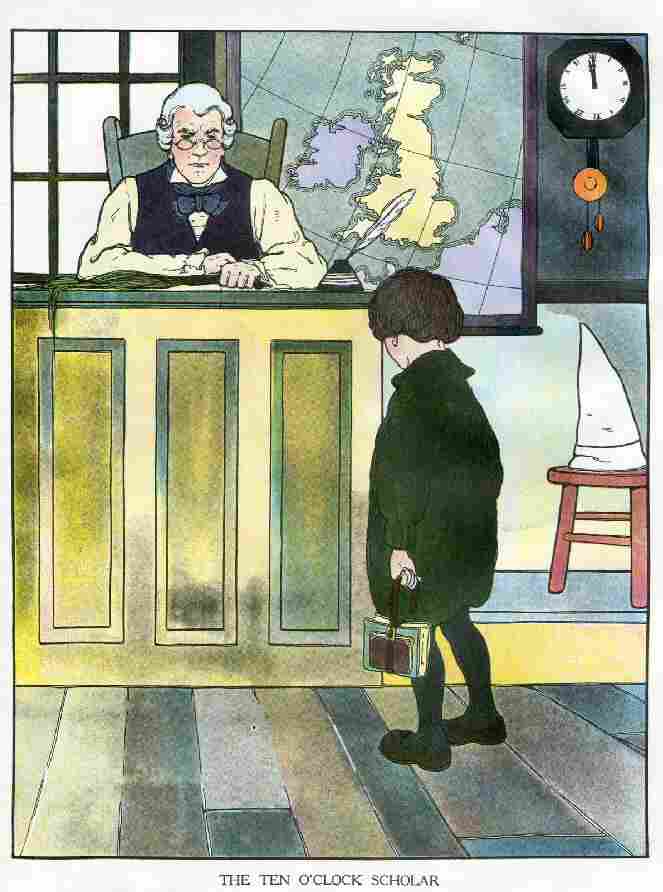
Figure 1.--Here is a sample nursery rhyme illustration, this one for "The 10 O'Clock Schollar". As with many such illustrationsd, the costuming is often fanciful. Notice the error in the clock.


Figure 1.--Here is a sample nursery rhyme illustration, this one for "The 10 O'Clock Schollar". As with many such illustrationsd, the costuming is often fanciful. Notice the error in the clock. |
Nursery rhymes are very simple, brief poems for very young children. The term came into use about 1840. Volumes of nursery rhymes for children began to appear well before this. Nursery rhymes are some of the earliest forms of children's literature. Perhaps the best known nursery rhymes are the Mother Goose rhymes which were first published about 1760 in Londeon. I'm not sure who the author was. There are many wonderful volumes of nusery rhymes with wonderful illustratiions. Often these illustrations are beautifully drawn, but the costumes depicted are often imaginative.
Here we see an one page from an illustrated book of children's
nursey rhymes. It's an illustration of the well-known Mother Goose rhyme,
A diller, a dollar,
A ten o'clock scholar,
What makes you come so soon?
You used to come at ten o'clock,
And now you come at noon.
I don't know who the illustrator was, but it was clearly done by an English illustrator. It looks to have been done in the early 20th century, probably the 1920s. The boy's clothes are probably somewhat fanciful. This is often the case with the illustrations in nursery rhymes. He seems to wear a dark one-piece suit with bloomers and a large collar with long black stockings. He carries his books
in a strap. The mop hairstyle looks late Victorian. But the historical period depicted doesn't quite fit the late 19th or early 20th century because the school master appears to be wearing a gray wig. (Wigs went out of style in England during the Napoleonic Wars, with a few exceptions like judges. The teacher is sitting at a high desk with a quill pen as though he were in the 18th or
early 19th century. The map of the British Isles on the wall would
suggest British origin. Notice also the dunce cap on the stool, indicating an old-fashioned punishment for lateness or not knowing one's lessons. I think this illustration may be famous. Perhaps some of our readers will recognize and know the name of the illustrator. A reader writes, "I recognize the illustration. I used to read the book to my kids when they were younger. It is from The Real Mother Goose now from Rand McNally and first published in 1916. The illustrator was Blanche Fisher Wright.
Navigate the HBC literary pages' Historical Clothing Web Site:
[Return to the main Main English non-fiction children's book type page]
[Return to the main Main children's literary page]
[Return to the main Main literary page]
Navigate the Boys' Historical Clothing Web Site:
[Introduction]
[Activities]
[Biographies]
[Chronology]
[Clothing styles]
[Countries]
[Girls]
[Bibliographies]
[Contributions]
[FAQs]
[Glossaries]
[Satellite sites]
[Tools]
[Boys' Clothing Home]
